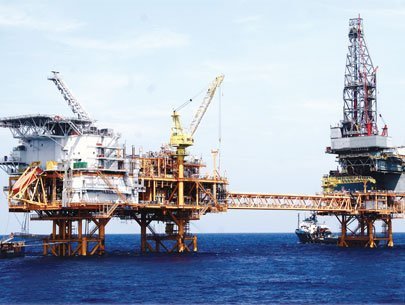VietNamNet Bridge – State owned economic groups and general corporations have
vowed to carry out the restructuring process and stop the operation of
unprofitable subsidiaries. However, in fact, their speech doesn’t agree with
their acts.
SOEs’ capital withdrawing: it’s easier said than done (part 1)
 |
|
|
Managers of big state owned economic groups have also many times affirmed their determination to withdraw capital from their non-core business fields.
PetroVietnam, which invested 7 trillion dong in non-core business fields, admitted at the conference on SOE reshuffle, that the investments in multi fields have not been profitable. It also said that PetroVietnam’s subsidiaries have been instructed not to set up new businesses in non-core business fields, and that PetroVietnam is planning to sell stakes to other investors.
However, PetroVietnam does not do what it preaches. One year ago, PetroVietnam issued the regulation on using PetroVietnam brand, which, in the eyes of experts, aimed to legalize the investments in other companies under different modes.
The regulation sets up strict rules on using PetroVietnam brand, including the requirement that every enterprise using the brand would have to pay no less than 1 billion dong for this.
However, the problem is that to date, there has been no legal framework stipulating the use of the brands of famous economic groups. There has been no legal document which says if the groups can issue specific regulations on the use of the brands managed by the State.
Especially, analysts said it is necessary to clarify if the economic groups can collect brand use fees. Meanwhile, PetroVietnam does not have the function of trade brands.
To date, PetroVietnam still has not set up any concrete plan on its capital withdrawal process. It is estimated that PetroVietnam injected 5630 billion dong in the finance, banking and insurance sectors, which account for 52 percent of the total investment in the sectors made by the 21 state owned economic groups and general corporations.
Some months ago, PetroVietnam announced that it would withdraw capital from the tower building project invested by PVX. However, after that, PetroVietnam spent 1.1 trillion dong to buy the stakes issued by PVX. Prior to that, the government instructed PetroVietnam not to pour more capital into the real estate sector.
The Electricity of Vietnam EVN stated in its document dated June 8, 2012, that it would complete the stake transfer to withdraw the investment capital worth 1102 billion dong by 2015. Meanwhile, in late 2011, the Ministry of Industry and Trade stated in a document that EVN still has 2108 billion dong left at some banks, insurance and real estate companies.
No reasonable explanation about the gap of 1 trillion dong has been quoted so far.
Meanwhile, EVN’s plan to transfer 5.3 percent of stakes at An Binh Bank has been refused by the State Bank for some reasons. No alternative plan has been suggested so far.
The Vietnam Coal and Mineral Industries Group (Vinacomin) also finds it difficult to take back the capital worth of 48 billion dong it injected in the Vietnam Investment Fund.
The Song Da Group also reportedly contributed 144 billion dong to the fund. Though it decided to withdraw capital from the fund one year ago, no progress has been reported.
The Vietnam Rubber Group has asked for the permission to have one more business field - the industrial zone development, the action which is believed to legalize its investment in the real estate sector.
Source: TBKTSG